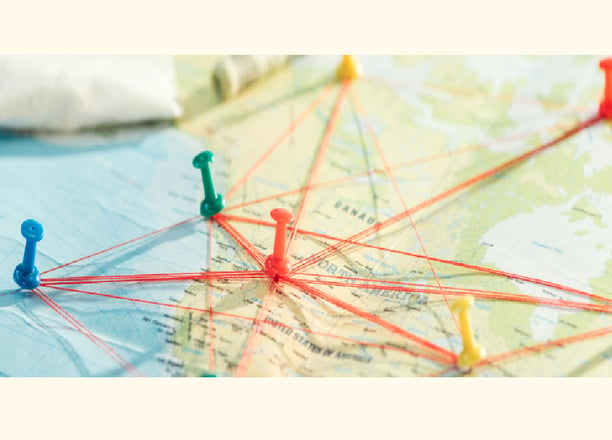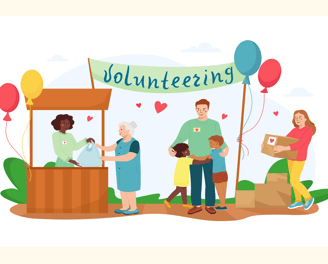Local Groups
Participate in community efforts to set up safe zones, distribute resources, and provide mutual aid. In times of crisis, whether due to war, natural disasters, or economic instability, individual survival can become difficult. A strong, organized community can improve everyone’s chances of safety and stability. Actively participating in community efforts to establish safe zones, distribute resources, and offer mutual aid ensures collective survival and strengthens community resilience. Here’s a detailed guide on these critical actions:
NEIGHBOR NETWORKS
12/9/20243 min read
Local Groups
Participate in community efforts to set up safe zones, distribute resources, and provide mutual aid. In times of crisis, whether due to war, natural disasters, or economic instability, individual survival can become difficult.
A strong, organized community can improve everyone’s chances of safety and stability. Actively participating in community efforts to establish safe zones, distribute resources, and offer mutual aid ensures collective survival and strengthens community resilience. Here’s a detailed guide on these critical actions:


1. Setting Up Safe Zones
A safe zone is a designated area where people can gather for protection, shelter, and basic needs. Safe zones are essential for providing security and structure during emergencies.
A. Steps to Establish Safe Zones
Identify Suitable Locations:
Choose locations with natural or man-made barriers (e.g., schools, community centres, basements, open fields).
Ensure they are away from conflict zones, floodplains, or other hazards.
Plan the Layout:
Designate areas for shelter, medical aid, food storage, and sanitation facilities.
Ensure there are clear entry and exit points for emergency evacuations.
Implement Security Measures:
Organize patrols or shifts to maintain security.
Set up barriers, alarms, or warning systems for potential threats.
Communication Systems:
Establish communication channels (e.g., radios, group chats, or designated messengers) to provide updates and warnings.
Emergency Drills:
Practice evacuation and emergency response plans to ensure everyone knows what to do during a crisis.
B. Benefits of Safe Zones
Physical Safety: Protection from immediate threats like violence or natural disasters.
Coordination Hub: Central point for distributing resources and information.
Peace of Mind: A sense of security and community support reduces panic.
2. Distributing Resources
Organizing the distribution of essential supplies like food, water, medicine, and clothing helps prevent shortages, hoarding, and unnecessary conflict within the community.
A. Setting Up Distribution Points
Centralized Locations:
Use community centres, schools, or open spaces as distribution hubs.
Organized Systems:
Implement a fair system (e.g., tickets or schedules) to ensure everyone receives their share.
Inventory Management:
Keep track of supplies and create a system to monitor what’s available and what’s needed.
Priority Groups:
Ensure vulnerable populations (e.g., elderly, children, pregnant women) receive aid first.
B. Types of Resources to Distribute
Food and Water:
Non-perishable foods (e.g., canned goods, grains, energy bars).
Clean drinking water or purification supplies (filters, tablets).
Medical Supplies:
First aid kits, prescription medicines, and hygiene items.
Shelter Materials:
Blankets, tarps, tents, and sleeping bags.
Fuel and Energy:
Firewood, gas, batteries, or solar chargers.
C. Collaboration with Authorities and Organizations
Partner with local government, NGOs, and relief organizations for additional support and supplies.
3. Providing Mutual Aid
Mutual aid refers to the voluntary exchange of resources, skills, and support within a community to meet shared needs.
A. Forms of Mutual Aid
Skill-Sharing:
Share practical skills like first aid, gardening, repair work, or self-defence.
Labor Exchange:
Help each other with tasks such as building shelters, repairing homes, or planting gardens.
Resource Lending:
Loan tools, equipment, or supplies to those who need them.
Child and Elder Care:
Support families by organizing care shifts for children or elderly residents.
B. Organizing Mutual Aid Networks
Create Community Groups:
Set up neighbourhood committees or teams to identify needs and coordinate assistance.
Communication Channels:
Use group chats, social media, or bulletin boards to match needs with available help.
Fairness and Inclusivity:
Ensure mutual aid is accessible to all community members, regardless of background or social standing.
4. Benefits of Community Collaboration in Crisis Situations
Improved Survival Chances:
Working together increases resource efficiency, security, and problem-solving capacity.
Reduced Panic and Chaos:
Clear plans and organized efforts help maintain order and reduce fear.
Stronger Resilience:
A connected community can better adapt and respond to evolving challenges.
Emotional Support:
Collaboration fosters a sense of solidarity and reduces feelings of isolation.
5. Steps to Get Involved in Community Efforts
Attend Meetings:
Join local gatherings to understand community needs and plans.
Volunteer Your Skills:
Offer any skills you have, whether medical, technical, organizational, or practical.
Contribute Resources:
Donate extra supplies like food, tools, or clothing to communal reserves.
Encourage Participation:
Motivate others to join efforts and highlight the benefits of collective action.
Stay Informed:
Keep up with community updates and communicate regularly with neighbours.
Participating in community efforts to establish safe zones, distribute resources, and provide mutual aid builds a strong, resilient network capable of surviving and thriving during crises. By working together, sharing knowledge, and offering support, communities can face challenges with greater confidence and security.






